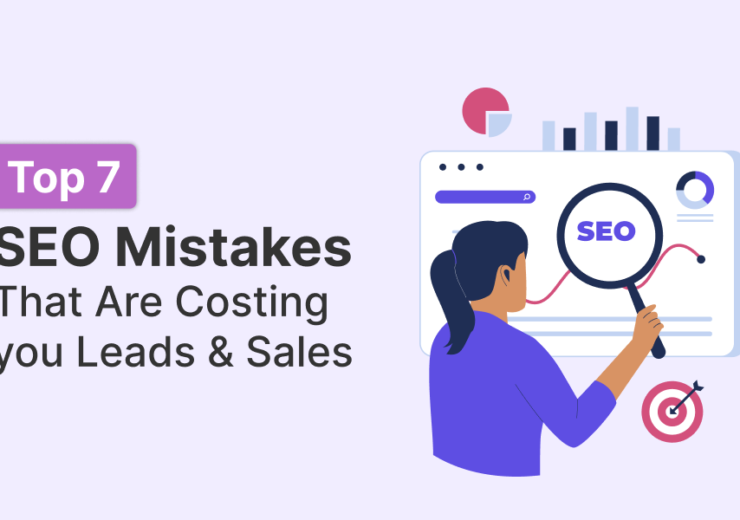How to improve SEO effectiveness for Magento websites?

We understand how crucial it is for your Magento store to appear prominently on search engines. After all, better visibility equals more traffic, higher conversions, and long-term brand success. If you’re running a Magento-powered store, you already know it’s one of the most robust and feature-rich eCommerce platforms. But it also comes with its unique SEO challenges, and solving them is key to unlocking your store’s full potential.
If you’re looking for expert help, check out our Magento SEO Service to improve your site’s performance quickly and effectively.
In this guide, we’ll explore:
✅ Why SEO matters more on Magento
✅ The best on-page SEO practices for Magento stores
✅ How to fix duplicate content issues in Magento
✅ How to make Magento truly mobile-friendly
We’ll also sprinkle in actionable tips you can implement today to get ahead of your competition!
Why is SEO so Important With Magento?
Magento (and especially Magento 2) is a robust platform that can support a wide range of and very large catalog of products, multiple languages, and a high level of customization. These aspects can also present significant challenges to SEO if not dealt with appropriately.
Here are four reasons that SEO is significant on Magento websites:
1. Magento stores tend to have very large product catalogs. This means more URLs, more duplicate content risks, and more crawl budget issues.
2. Most Magento themes and setups do not come out of the box fully optimized for SEO, meaning it is very likely still possible to improve site speed, improve mobile friendliness, and metadata.
3. The level of competition in e-commerce is brutal. Optimising your Magento website is important if you want to outrank your competitors and receive more organic traffic to your website.
4. Customers use search engines to find products based on keywords. If your product, category, or any of your pages are not optimized for SEO, there is a very real risk you will lose prospective customers.
By addressing these SEO requirements properly, you will enhance visibility, reduce bounce rates, and increase conversions. (You may also want to read our article on 10 Proven Ways to Win Any Conversions in Magento for more conversion-focused insights.)
What Are the Best Practices for On-Page SEO in Magento Stores?
On-page SEO is your foundation, and it is more important than ever in Magento. Take a look at the best practices below.
1. Optimize Title Tags & Meta Descriptions
Magento allows you to edit title tags and meta descriptions for each page. It’s good practice to have original, keyword-rich meta titles and descriptions for each product, category, and CMS page.
Pro Tip: Write your target phrases in context so that they appeal to both users and search engines.
2. Create SEO-Friendly URLs
Though URLs are created automatically in Magento, they sometimes contain unnecessary parameters or stop words! Making modifications under the configuration settings can help you get clean, descriptive, keyword-rich URLs.
For example:
✅ /men/shoes/running-shoes.html
❌ /id=23&type=product&name=run-shoes
3. Optimize your product images
Images are very important in e-commerce. Make sure to compress your images to increase page load speeds. Images should also have alt tags with relevant keywords.
4. Internal linking
Link between related products, categories, and blog content. Internal links help visitors discover more of your site’s content, keep them engaged longer, and also help search engines understand your site structure better.
5. Improve page speed
Magento can be resource-heavy sometimes. Use caching, enable flat categories/products, and optimize your server to serve pages quickly.
When you implement these best on-page practices, you strengthen the foundation of your site and provide a fluid user experience.
How Do You Fix Duplicate Content Issues in Magento?
One of the biggest SEO pitfalls in Magento is duplicate content, which happens when multiple URLs display the same or very similar content. This can confuse search engines and dilute your ranking signals.
Here’s how to fix and prevent duplicate content issues:
1. Use Canonical Tags
Magento allows you to add canonical tags, which tell search engines which version of a page is the “preferred” one. This is particularly useful for product variations or filtered categories.
You can enable canonical tags in:
Stores > Configuration > Catalog > Catalog > Search Engine Optimization
Set both categories and products to Yes for canonical URLs.
2. Configure URL Parameters
When users apply filters (like color or size), Magento may generate new URLs with query parameters, which can lead to duplicate content. Block irrelevant parameters in your robots.txt or through Google Search Console.
3. Avoid Session IDs in URLs
Session IDs can create unique URLs for the same content. Make sure your configuration doesn’t append session IDs to URLs unnecessarily.
4. Unique Descriptions & Content
Many store owners copy manufacturer descriptions, which means hundreds of stores have the same content. Write your product descriptions to make your pages unique and valuable.
By actively managing duplicate content, you ensure search engines correctly index your preferred pages and rank them higher.
How to Create a Truly Mobile-Friendly Magento Store?
Did you know that over 60% of e-commerce traffic is now being sent from mobile devices? If your Magento website is not mobile-friendly, you are potentially losing a significant number of clients.
Here’s how to make your store look great on mobile:
1. Implement a Responsive Theme
Select a responsive Magento theme that will scale your store to different screen sizes automatically. Use Google’s Mobile-Friendly Test tool to ensure your website is up to standards.
2. Optimize Navigation for Mobile
On compact screens, the menus and navigation must be easy to click and intuitive to use. Use sticky headers, collapsible menus, and clear CTAs.
3. Fast Mobile Load Times
Mobile users are impatient (even more so than desktop users), so load times must be as fast as possible. Compress images, minimize JavaScript, and take advantage of browser caching to speed things up.
4. Optimize the Checkout Process
Your mobile checkout process should be as easy and simple as possible. Allow for a guest checkout option, embrace autofill whenever you can, and minimize the steps to conversion.
5. Continue to Test
Be sure to test your site regularly on mobile devices with different sizes and shapes to identify user experience issues that could affect your customers.
By making mobile optimization a priority, you’re not only benefiting your SEO, but you are also improving the shopping experience and dramatically increasing conversions.
Additional Tips for Increasing Magento SEO Performance
Although the strategies above cover the basics, here are a couple of more advanced tips to help you amp up your Magento SEO.
- Use structured data (schema.org) for search snippets that include rich info like ratings and prices.
- Create and regularly update your XML sitemap, then submit it to search engines whenever you’ve made significant changes.
- Use a robots.txt file to manage crawler access, and keep it clean!
- Ensure you routinely upgrade your Magento installation and extensions or plugins to mitigate security risks and bugs that could potentially harm your SEO.
- Invest in content marketing. In addition to SEO, paying for authority and relevance can help generate highly focused traffic to your store. Things like blog posts, guides, and product comparisons are all great ways of adding content.
Final Thoughts
Magento is a powerful platform, but to fully unlock its potential, you need to prioritize SEO. By understanding why SEO matters more on Magento, implementing the best on-page practices, resolving duplicate content issues, and optimizing for mobile users, you set your store up for long-term success.
And for more insights, tutorials, and tips, be sure to check out the Magento Content Library to stay ahead of the curve.
At Kantha Digital, we specialize in helping Magento store owners like you grow their organic traffic, improve user experience, and increase sales through proven SEO strategies. Reach out today to discuss how we can help your business thrive!
We help brands grow to their fullest potential. Don’t miss out on your chance to stay up to date with latest trends.



